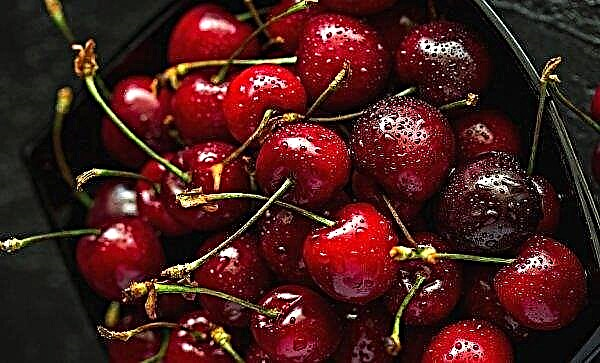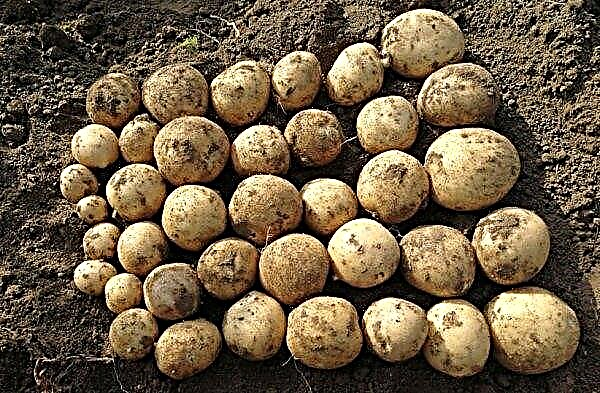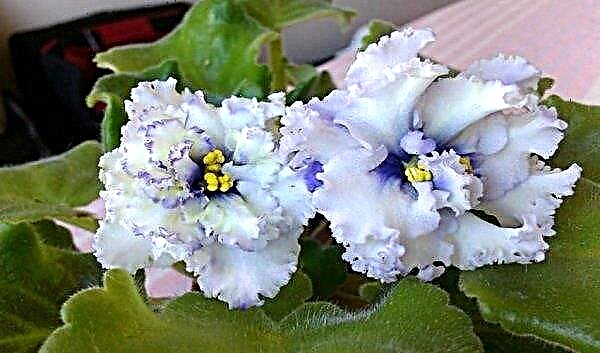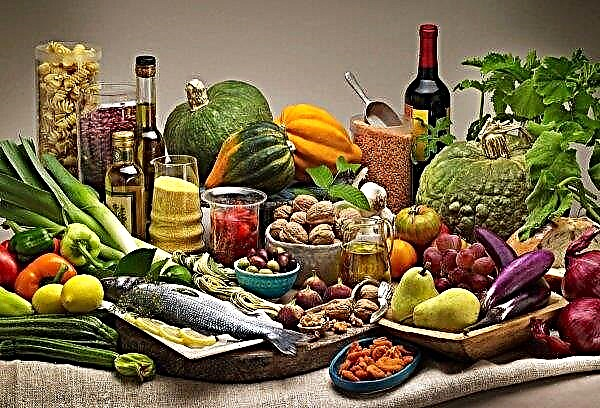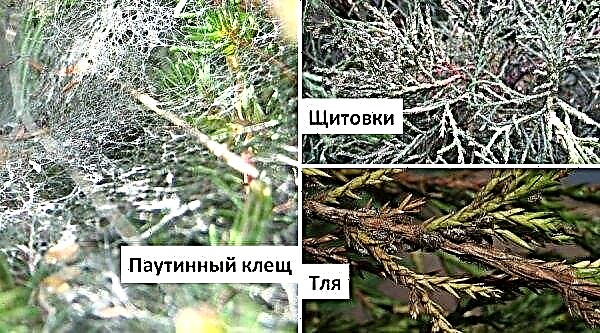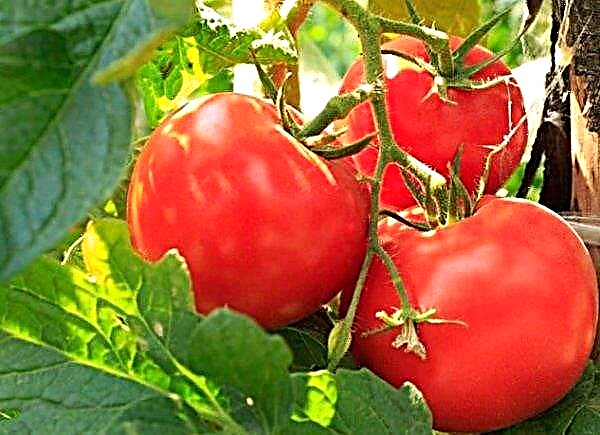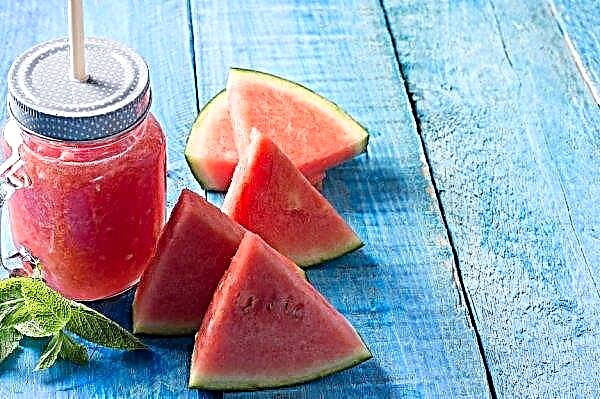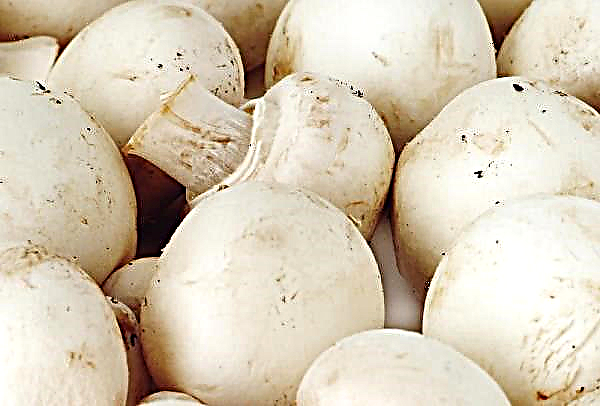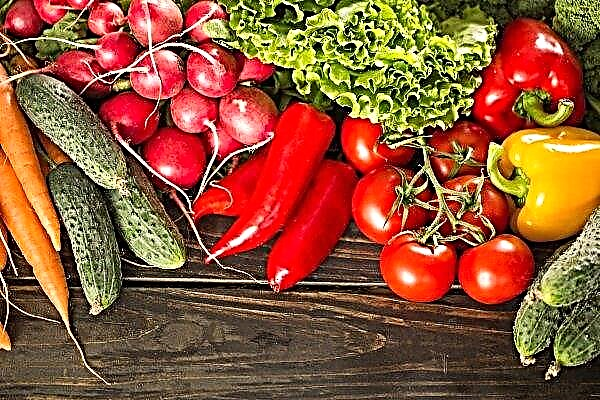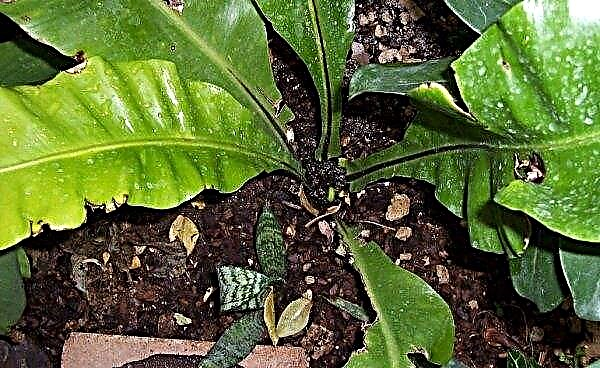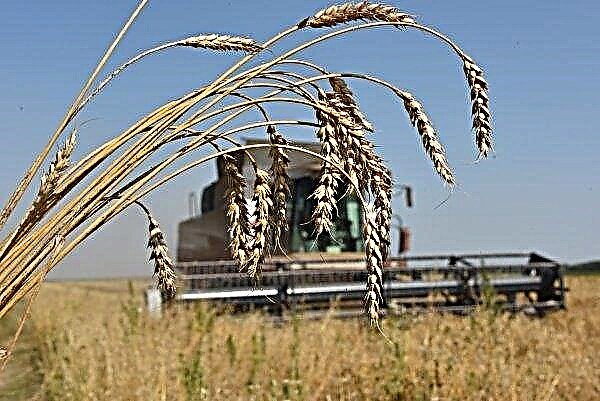Before finally deciding on the variety of cabbage for growing in a summer cottage, you need to familiarize yourself with information about whether it is suitable for the climatic conditions of the region and what requirements it puts forward. The features of growing Tobia will be discussed in this article.
The history of selection of varieties Tobia
The Dutch breeders worked on breeding the hybrid. In 2005, he was included in the State Register of the Russian Federation.
Description and characteristic
At the beginning of our acquaintance with the hybrid, we offer to find out what the plant and its fruits look like, as well as evaluate its advantages and disadvantages.
Did you know? A cabbage weighing 63 kg was obtained by U.S. resident Scott Robb in 2012. Typically, cabbages, depending on the variety, are capable of reaching a maximum weight of 15 kg, and the average weight is 2.5 kg.
Appearance of cabbage
The plant grows low. It has dark green leaves with faint pimples and wavy edges. Streaks clearly appear on them. When used, they are not stiff. The lower leaves are close to the surface of the soil. The stump is short.
Heads of cabbage differ in density. They are rounded flat in shape. Their insides are white. The average weight of one instance is from 5 to 7 kg. The taste of heads is sweet, juicy. There is no bitterness in them.

Ripening dates and productivity
The heads mature in the medium term - from the moment of seedling planting to harvesting, 85–90 days elapse. Hybrid productivity is high - 20 kg per 1 m², 322–760 centners per 1 ha.
Cold resistance
Cabbage has a high resistance to cold. That is why the variety is recommended for cultivation in many regions of Russia, including northern ones. It can be cultivated both in small summer cottages and on an industrial scale.
Decent qualities and disadvantages of the variety
- Gardeners who have already dealt with the cultivation of Tobium cabbage, among its advantages, note the following:
- excellent taste of heads of cabbage;
- resistance of the heads to cracking;
- high yielding capacity;
- ability to tolerate transportation well;
- the versatility of the fruit;
- resistant immunity to most diseases of cruciferous crops.
- The disadvantages of the variety include:
- short shelf life;
- the proximity of the lower leaves to the ground, which increases the risk of rot.
Agricultural technology cultivating varieties Tobia
To get the desired level of yield, you should correctly plant the cabbage. It should be grown in seedlings. This is how it will be possible to protect the garden culture from frost and get the maximum number of sprouts.

The process of planting and growing seedlings consists of several stages:
- seedbed preparation;
- soil preparation;
- seedling care;
- transplanting sprouts into open beds.
Seed and soil tillage
Since Tobia is a hybrid, the seeds need to be purchased only in a specialized store. The seed material collected by hand or bought from the hands is not suitable for planting; it does not preserve the qualities of the mother plant.
Important! Before sowing seeds, read the description on the packaging. If the manufacturer indicates that they do not need soaking, then this procedure does not need to be performed.
For store seeds, fungicide treatment from fungal infections and culling are not required. The manufacturer has already taken care of this. For better germination, you can put the planting material in water, heated to + 40 ... + 50 ° C for a quarter of an hour. Then for 2 minutes it should be dipped in cold water and dried to the end.
 The soil for planting is purchased in a specialized store or mixed with your own hands.
The soil for planting is purchased in a specialized store or mixed with your own hands.
Here are some suitable options for soil substrate for growing cabbage seedlings:
- peat + sand (50/50%);
- peat + turf + sand (75/20/5%);
- humus + turf + sand (45/50/5%).
Sowing is carried out in early March, following the following instructions:
- Lay a layer of soil substrate 3-4 cm high in a container for growing.
- Water Alerin-B and Gamair (2 tablets / bucket of water).
- After 1-3 days, make furrows in the soil 1 cm deep at a distance of 3 cm from each other.
- Place the seed into the furrows at a distance of 1-1.5 cm from each other.
- Cover the seeds with a layer of soil 0.5-1 cm high.
- Put the container in a room where the temperature is maintained + 18 ... + 20 ° С.
- After the appearance of sprouts, the temperature must be lowered to + 7 ... + 9 ° C.
Further seedling care
Pickling of seedlings is carried out 7-10 days after the appearance of sprouts. To do this, take pots with a diameter of 6-8 cm and place in them the same soil that was first when planted, but with the addition of double superphosphate (1 tbsp. / 1 bucket of the mixture) and wood ash (2 tbsp.). A low layer of river sand is laid on the surface of the soil, which will protect the sprouts from the black leg.

Planted plants are placed at a temperature of + 17 ... + 18 ° C. After a couple of days, the daytime temperature is lowered to + 13 ... + 14 ° С, and the nighttime - to + 10 ... + 12 ° С. When 2 leaves are formed on the plants, they are fed with a complex mineral fertilizer.
2–2.5 weeks before the expected date of the seedlings moving to the open ground, they begin to harden it - they take it out daily to fresh air, starting from 15–20 minutes, gradually increasing the length of stay. In the same period, fertilizers are applied a second time. Urea (1 tbsp.) And potassium sulfate (1 tbsp.) Dissolved in a bucket of water are used.
Preparation of the place and soil on the bed
- Cabbage will grow healthy and of high quality, if for its cultivation to choose a well-lit area, which used to grow:
- carrot;
- potatoes;
- cucumbers
- bow;
- Beans
- cereals;
- garlic.

- Do not place it on the beds after:
- cabbage;
- Tomatoes
- radishes;
- turnips;
- beets.
The best cabbage yield comes from planting in loamy soils with neutral acidity. Preparatory work on the site must begin in the fall. It must be cleaned of plant debris, dug deep and fertilized with humus, manure or compost. In the spring, a few weeks before transplanting, a mixture of urea (1 tbsp.), Superphosphate (1 tbsp.) And wood ash (1 tbsp.) Are added to the beds.
Important! According to the rules of crop rotation, cabbage can not be cultivated on one site for longer than 2 consecutive years. Otherwise, the plant decreases productivity and increases the risk of developing diseases and attacks of harmful insects.
Transplanting seedlings in the open ground
Seedlings ready for planting on open beds should be strong, 15 cm high, have a developed root system and 5 leaves. Typically, such characteristics are observed at the age of 35–45 days.
Sprouts are transferred to the ground from late spring to mid-June by transshipment. This means that after removal from the pots, the root system is not cleaned of the earth, but transplanted together with an earthen lump.
The holes should be slightly wider and deeper than the earthen lump. The intervals between the holes should be done at 45–50 cm, between the rows - 50–55 cm.  The recommended planting density for this hybrid is 2.5–3 plants per 1 m². For transplanting seedlings choose a cloudy day. Landings are covered with agrofiber.
The recommended planting density for this hybrid is 2.5–3 plants per 1 m². For transplanting seedlings choose a cloudy day. Landings are covered with agrofiber.
Cabbage care
Caring for cabbage will not be difficult. She needs watering and fertilizing, cultivating and removing weeds, preventive treatments against diseases and parasites.

Watering and feeding
Humidification of the soil in the beds of newly planted seedlings should be done 3-4 times a week. One sprout will need to spend 2-3 liters of water. During the period of filling the heads of humidification, it is necessary to limit.
A month after planting, it is necessary to establish an irrigation regime in the amount of 1 time per week. On 1 m², you need to pour 10-12 liters of water, heated to + 18 ° C and above. The best way to water cabbage is drip. Sprinkling and furrow irrigation are also good. For normal development and growth of the plant, as well as to obtain a rich harvest, cabbage should be fed.
Important! Watering the garden culture with cold water leads to the development of fungal infections.
It is recommended to produce 3-4 fertilizers according to the following schedule:
| Fertilizer application period | Fertilizer Options |
| 2 weeks after moving seedlings to the ground | Nitrogen-containing mixtures:
|
| 10 days after the first |
|
| Before fruit formation |
|
| In the last summer month |
|
Loosening and weeding
Regularly after moistening the soil and rainfall, loosening is necessary. They are necessary to prevent compaction of the upper soil layer and improve the moisture and air conductivity of the soil. The depth of cultivation should be approximately 7 cm.
Cabbage also needs to be spud. Hills contribute to the growth of lateral roots and improve plant development. During the season, 2 such procedures will be required: 20 days after the seedlings are planted in the ground and after another 10-12 days. From the trunk zone at a distance of 25 cm glanders collect the earth and sprinkle it with a slide to the stem.

Another important and mandatory care measure is weeding. Weed herbs create a shadow for photophilous cabbage, which prevents it from developing normally. In addition, they become a source of reproduction of diseases and parasites. Weed cabbage carefully to avoid damage to the root system.
Pest and Disease Control
Thanks to its strong immunity, Tobia cabbage is rarely affected by pathogens or harmful insects. For the prevention of beds, sprinkle with wood ash, tobacco dust, black pepper.
Effective planting in the aisles of strong-smelling plants that repel pests. These include marigolds, dill, parsley, and marigolds.
The most dangerous can be the tracks of the cabbage.  In order not to let the butterfly enter the garden, it is possible to spray with valerian, infusions of needles, potato tops, saline, soap-ash solutions. The fight against it is carried out by “Aktofit”, “Fitoverm”, “Bitoxibacillin”, “Actara”, “Decis”.
In order not to let the butterfly enter the garden, it is possible to spray with valerian, infusions of needles, potato tops, saline, soap-ash solutions. The fight against it is carried out by “Aktofit”, “Fitoverm”, “Bitoxibacillin”, “Actara”, “Decis”.
Features of harvesting and storage of crops
Harvest planning on cloudy dry weather. Due to the fact that the heads of dense leaves, they can be removed manually or by machine. In the manual method, the heads are cut with a sharp knife, leaving a stump 8-12 cm high.
Did you know? Today it is known that the first to start cooking sauerkraut are the Chinese. The documentary sources describe that back in the 3rd century. BC. they soaked it in rice wine and gave it to the builders working on the Great Wall of China.
Vegetables are stored in the refrigerator or in the cellar at a temperature of 0 ° C to + 5 ° C, good air circulation, humidity 90–95%. In the basement, heads of cabbage are placed in cardboard or wooden boxes. In cold conditions, Tobia cabbage is not stored for long - about 3 months. Its shelf life can be extended by coating the heads with clay or wrapping them with paper.
 Another effective way is to store cabbage in a cling film.
Another effective way is to store cabbage in a cling film.
Cabbage can also be stored for longer if it is dried or frozen. The dry product is suitable for use 2 years, frozen - 1 year. Tobia cabbage can be grown for use with a variety of culinary purposes. Leaves of heads of cabbage can be eaten fresh, making salads from them, and they can also be processed in different ways: boil, stew, pickle, salt, fermented.
So, the Tobia cabbage hybrid is popular both among summer residents and owners of fields and farms. This is due to the many advantages that he possesses. With proper cultivation and compliance with agricultural technology, you can regularly get high yields of heads of cabbage with excellent taste and marketability.

